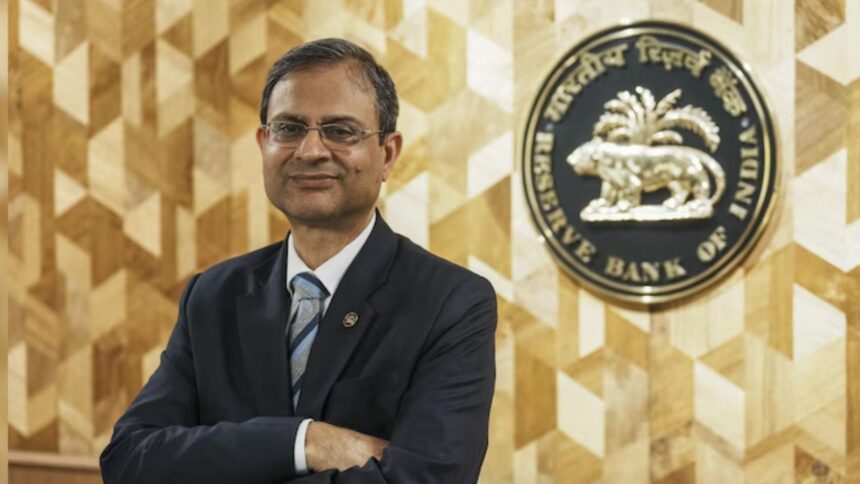The Reserve Bank of India’s (RBI) six-member Monetary Policy Committee (MPC) is expected to cut the repo rate – the key policy rate – by 25 basis points (bps) in the policy meeting scheduled from June 4 to 6, to support growth as inflation continues to remain below the 4 per cent target.
This would be the third consecutive reduction in the repo rate since February 2025. Economists also believe that the RBI may maintain the ‘accommodative’ monetary policy stance.
With benign , there has been a consensus among economists that the six-member MPC will cut the repo rate by 25 basis points (bps) to 5.75 per cent in the upcoming meeting. One basis point (bps) is one-hundredth of a percentage point.
“We expect RBI to cut policy rates by 25 bps in June. The space to cut policy rates is derived from sharp deceleration in inflation. Meanwhile, given the uncertainty on demand conditions both domestic and external, growth requires money policy support,” said IDFC First Bank Chief Economist, Gaura Sengupta.
Headline inflation, as measured by year-on-year changes in the all-India consumer price index (CPI), moderated to 3.2 per cent in April, the lowest since July 2019, from 3.3 per cent in March. The easing in CPI has been driven by the sustained fall in food prices.
Economists said that with inflation remaining below the 4 per cent target in the last three months (February, March and April), and a sharp fall in food inflation, CPI is likely to durably align with the 4 per cent target over a 12-month period.
Under the flexible inflation targeting (FIT) framework, the RBI has been mandated by the government to maintain CPI at 4 per cent with a band of +/-2 per cent.
“The benign inflation outlook and moderate growth warrant monetary policy to be growth supportive, while remaining watchful about the rapidly evolving global macroeconomic conditions,” the RBI said in the annual report for 2024-25.
The MPC is likely to retain the monetary policy stance as ‘accommodative’, analysts said.
In the April policy, the rate-setting panel had changed the stance from neutral to accommodative.
According to economists, the RBI is likely to revise its projections on real gross domestic product (GDP) and inflation for FY26.
“The commentary on both growth and inflation will be important as there are expectations of revisions in their forecasts for both the parameters. It is also expected that the RBI will detail its analysis on how the global environment would be affecting the Indian economy considering that the tariff reprieve provided by the USA would end in July,” said Madan Sabnavis, chief economist at Bank of Baroda.
As per the RBI’s estimate, CPI inflation for FY26 is expected to be at 4 per cent. The easing of supply chain pressures, softening of global commodity prices and higher agricultural production on the back of a likely above-normal south-west monsoon augur well for the inflation outlook in FY26, the RBI’s annual report said.
“Any potential downward revision in FY26 CPI inflation will be closely watched, as it will provide an indication of the depth of the rate cutting cycle,” said IDFC First Bank’s Sengupta.
The real GDP growth for FY26 is projected at 6.5 per cent. In the quarter ended January-March 2025, the domestic economy picked up pace and grew at a four-quarter high of 7.4 per cent. For the financial year 2024-25, the growth rate stood at 6.5 per cent, which was a four-year low.
“The Indian economy is poised to sustain its position as the fastest growing major economy during 2025-26, supported by pickup in private consumption, healthy balance sheets of banks and corporates, easing financial conditions and the government’s continued thrust on capital expenditure,” the RBI’s annual report said.
If the repo rate is reduced by 25 bps, all external benchmark lending rates (EBLR) linked to it will decline by a similar margin. It would be a relief for borrowers as their equated monthly instalments (EMIs) on home and personal loans will drop by 25 bps.
Following a 50 bps cut in the repo rate since February 2025, most banks have reduced their repo-linked lending rates by the same magnitude. Lenders have also lowered their marginal cost of funds-based lending rate (MCLR).
Following the likely repo rate cut in the June policy, the RBI is likely to go for a total reduction of 50 bps in the current financial year, experts said.
“Two more cuts over the subsequent two policy reviews are expected, taking the repo rate to 5.25 per cent by the end of the cycle,” said Aditi Nayar, chief economist, ICRA Ltd.







